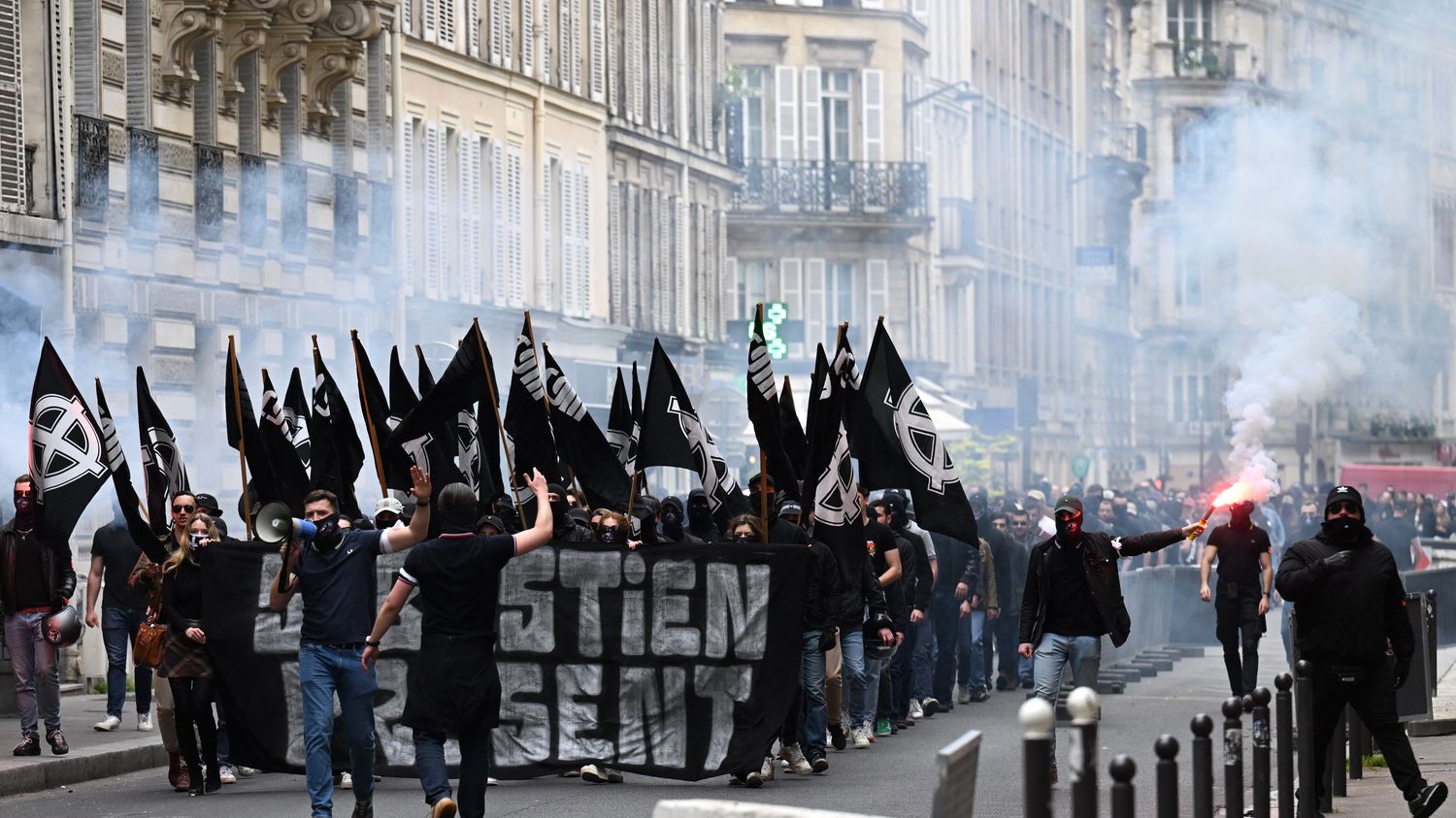A week after the parade of several hundred neo-fascist activists in the capital, several rallies planned for this weekend have been banned by the prefecture. Overview of these formations that claim to be patriotic.
Hooded silhouettes, Nazi symbols on the arm and neo-fascist slogans parading in the streets of the capital … This is what the Ministry of the Interior wants to avoid this weekend of May 13 and 14, a week after the controversy aroused by the demonstration of several hundred ultra-right activists in Paris. Several Parisian events organized by groups classified to the right of the right are prohibited on Saturday and Sunday, including a symposium and four demonstrations. Gérald Darmanin had sent a directive on Wednesday asking the prefects to prevent any procession from the ultra-right.
>>> REPLAY. Ultra-right groups: should we be worried? The Franceinfo Talk debate
Who are these groups that the authorities consider a threat? The ultra-right represents between 2,000 and 3,000 active militants to which one can add a few thousand sympathizers. According to information from franceinfo, more than 1,000 ultra-right activists are currently being followed by the intelligence services, which consider them a serious threat. These are shifting groups, with different ideologies and traditions, which come together and break up according to the dissolutions desired by the government.
Eight dissolutions took place in 2019, including that of the Bastion Social. Followed by the dissolution of Génération identitaire (2021), the Les Zouaves group (2022) and Bordeaux nationalistes (February 2023).
What is the difference between the ultra-right and the far-right?
The ultra right is mainly distinguished from the extreme right by its use of violence vis-à-vis its political adversaries and in particular left-wing activists.
The common gateway to these small groups is the Action Française, born in 1889, which militates for the restoration of a monarchy. This movement enjoys a certain “historical prestige” among these activists because it presents itself as a school of thought, founded by Charles Maurras. However, this movement is often considered too soft by ultra activists.
Dissolved, the small groups reform immediately
After their dissolution, these small groups in the sights of the government reform in a fragmented way throughout the territory. Identity movements such as Argos or Les Remparts based in Lyon were built on the ashes of the Génération identitaire group, dissolved two years ago. The “great replacement”, a racist and conspiratorial theory, is frequently mentioned in its ranks, as is the defense of European identity. They are also followers of very media punch actions.
Another group is part of this ultra-right galaxy: the neofascist groups, and in particular the May 9 Committee (C9M) which marched on Saturday May 6 in Paris brandishing Celtic crosses or the Nazi figure of the black sun. It is to this movement that the Union Defense Group (GUD) is attached, which has reappeared in recent years. The C9M claimed 700 participants in the demonstration last Saturday (550 according to the prefecture), against 400 last year.
